
|
NINCO Mosler MT900R LeyJun 'Lightened' Review By Shawn Smith Appearance: 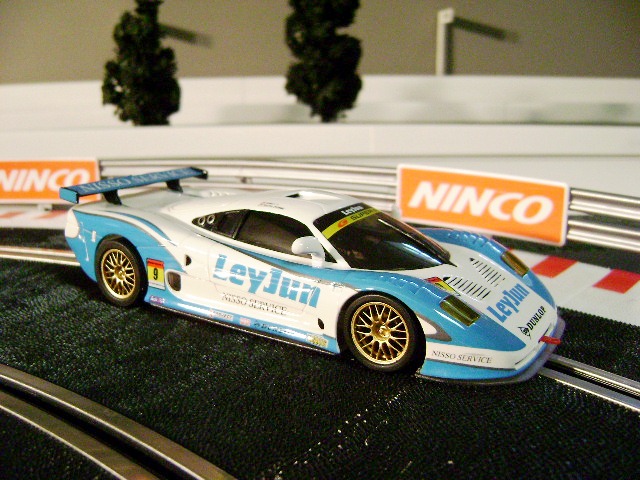 As is typical for me I'll start off taking a look at the outside of the LeyJun Mosler MT900R. Many of you might be thinking 'yeah, so what... just another repaint' and for the most part you would be right. This white and light blue paint job is now the 4th of this car I have aquired and in the appearance department nothing has really changed. Well, almost nothing... 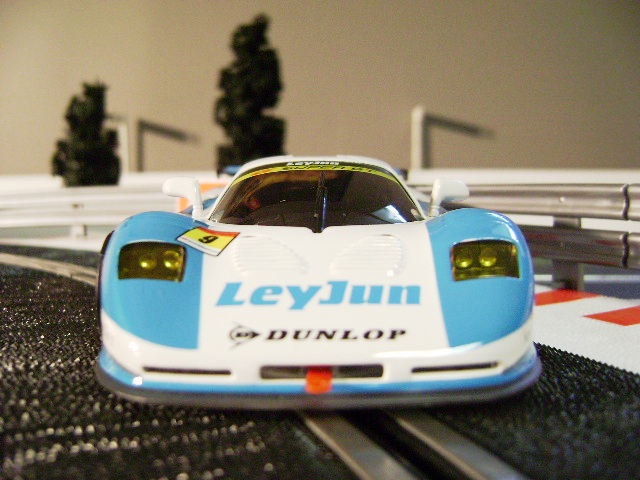 With the shot of the nose a little out of focus it almost feels like my camera wants to cut straight to the first difference. We'll get to that in a moment. Detail wise this new edition car has all the same details as previous models with seprately applied tow hooks, a heavily louvered body and very sturdy side view mirrors. 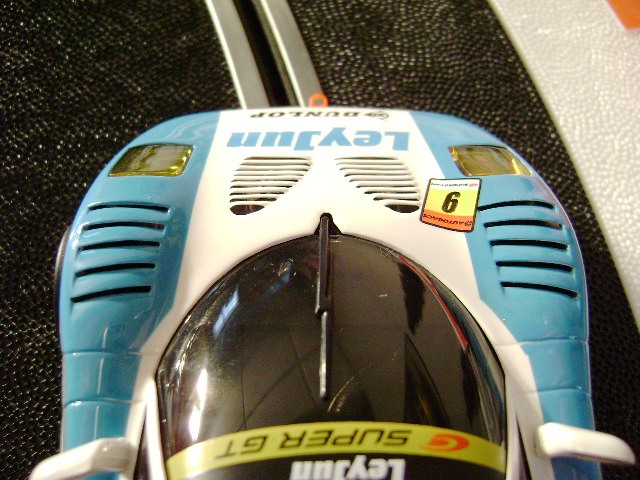 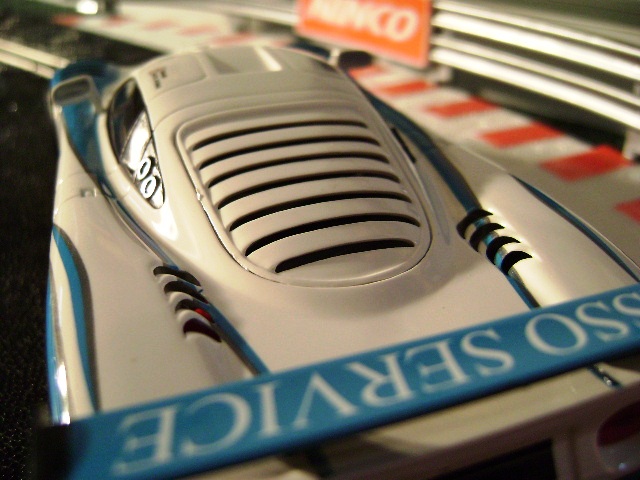 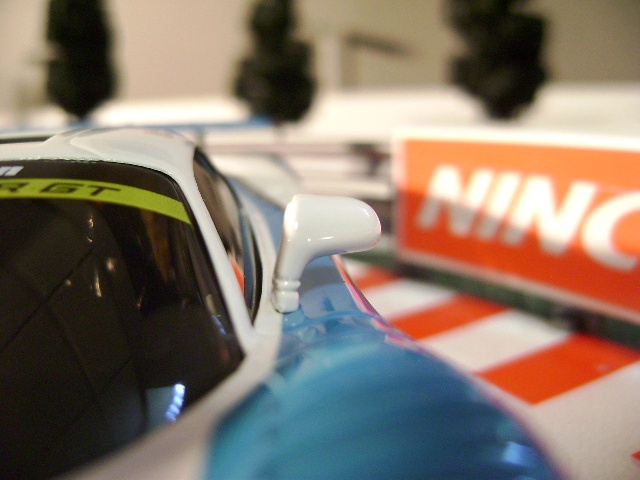 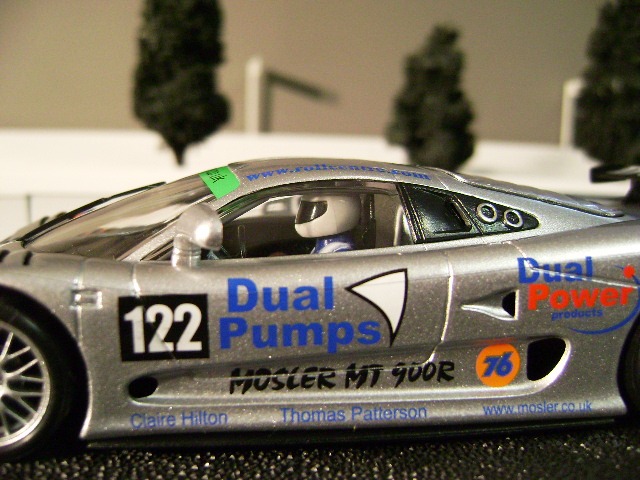 No, this isn't a mistake, you are in fact looking at a different car in this image but it's going to help to introduce some of the changes in this new 'Lightened' LeyJun model. The Xavex car here shows perfectly clear glass, allowing the observer a good look inside at the cockpit which has features such as a partial driver body, fire bottle and roll cage details. 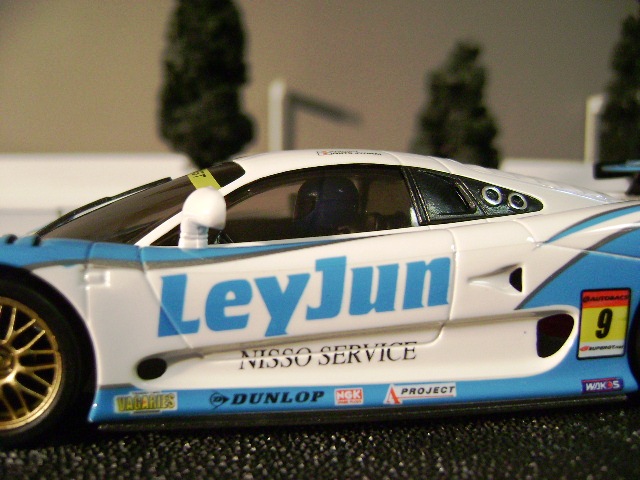 In the new LeyJun car the windows come tinted for the first time of the cars I have owned, the second after the release of the Vortrom NINCO Pro-Race version, and I knew right away it meant that this new LeyJun was trying to hide something. 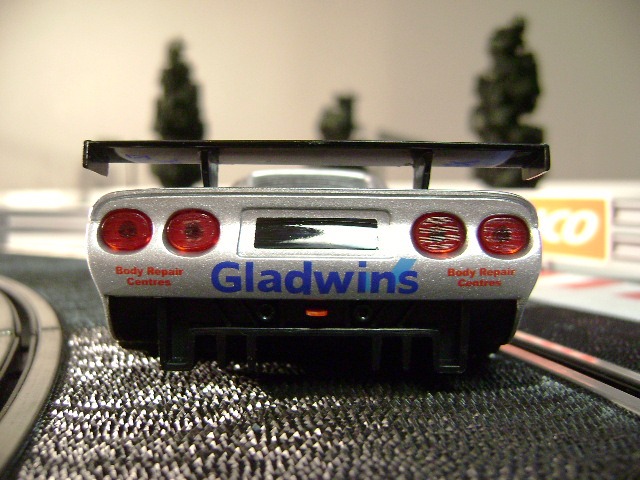 Here again we'll first look at the back of the Xavex car to show how the majority of Moslers have come from the NINCO factory. A painted body mounted to a solid black chassis has been the standard, with the previously mentioned Vortrom Pro-Race car being the exception, but what do we have here??? 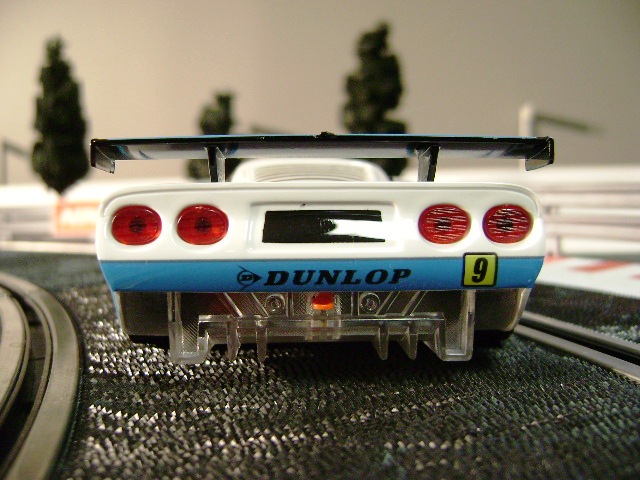 Hold up!! What is this? Could it be a clear chassis for the first time in a NINCO RTR? The answer is 'clearly', pun intended, an obvious yes! Before we get better look at this little nugget there are still a few issues NINCO needs to know about. 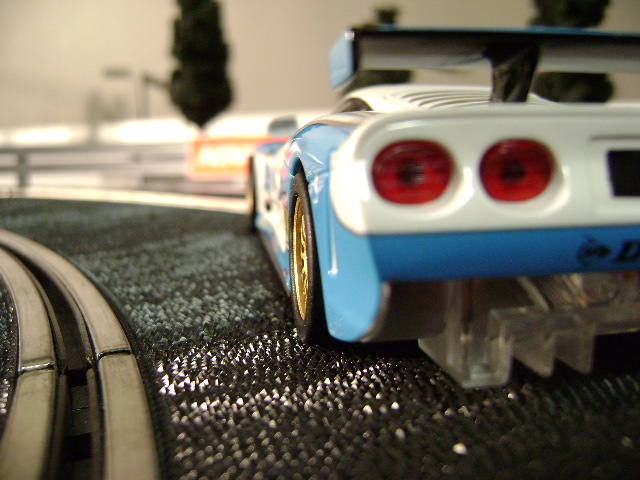 In this image above notice how nice and straight the side profile of the car is. The rear wheel, the gear side mind you, is perfectly flush with the side of the body just as it should be. 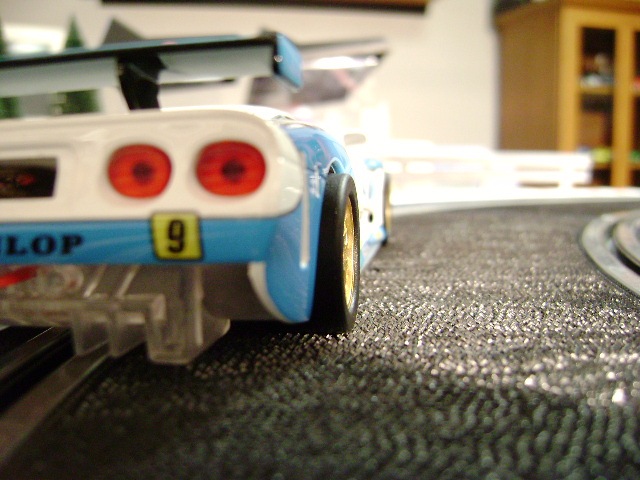 On the non-gear side however notice how much the rear wheel/tire sticks out from the side of the car. Can't blame space needed for gearing purposes on this misalignment as I mentioned the gearing is on the other side. I also checked to make certain the wheel was pressed all the way on and it was so without trying to push over both the angle-winder gear and axle collar to correct the axle alignment, which in turn would only push out the already flush wheel, the only way to remove this issue is to take off the wheel and cut off a small amount of the axle away and refit the wheel. 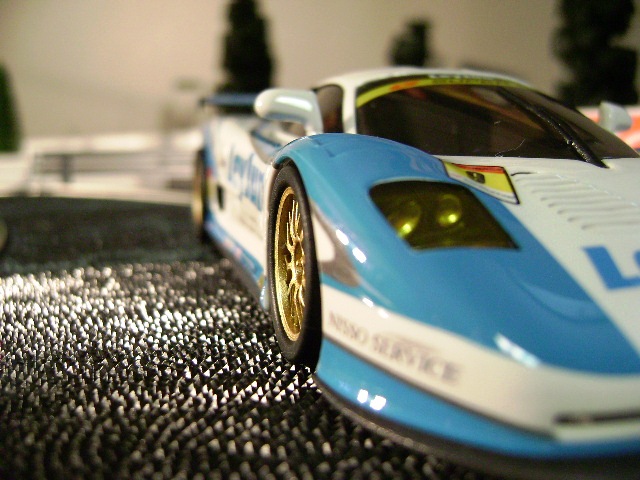 In the front the issue is similar but this is nothing new for NINCO models as axles having too much side to side freeplay is pretty common. With the wheel pressed all the way in towards the chassis it's almost perfectly flush with the body... 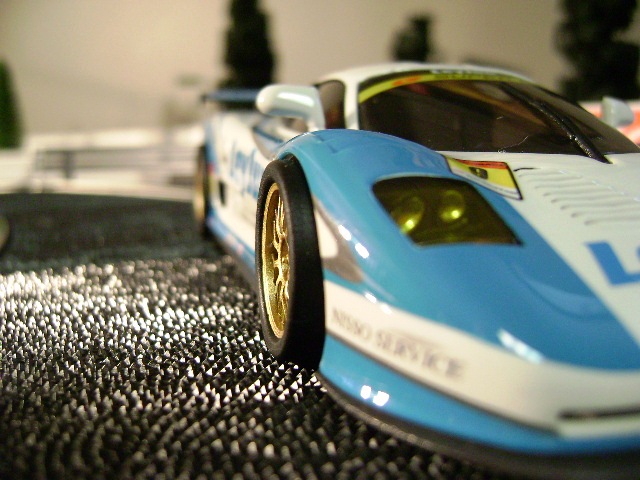 Yet the amount of extra axle makes the wheel stick out way too far in my opinion and here again I'll remove a wheel and grind down the excess axle to make both wheels as flush with the sides as possible. 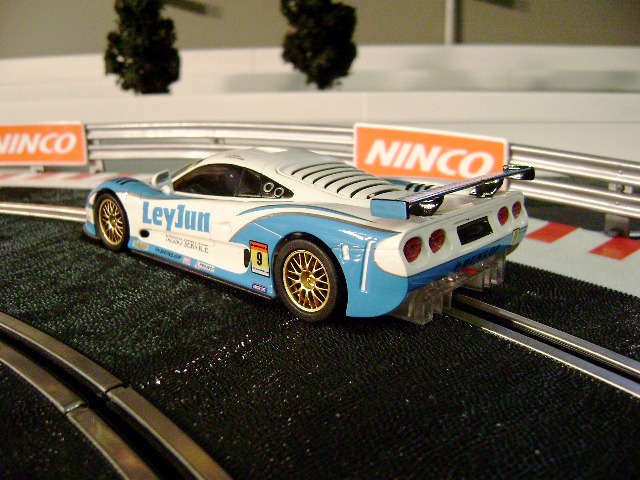 Touching on the overall finish of the body and paint here I give NINCO high marks. The paint is close to perfect, the finish is glossy and contaminent free, and while my camera might do a good enough job of picking it up details like the slight metal-flake grey pinstiping accenting the white and blue paint it looks exceptionally well done. Performance: 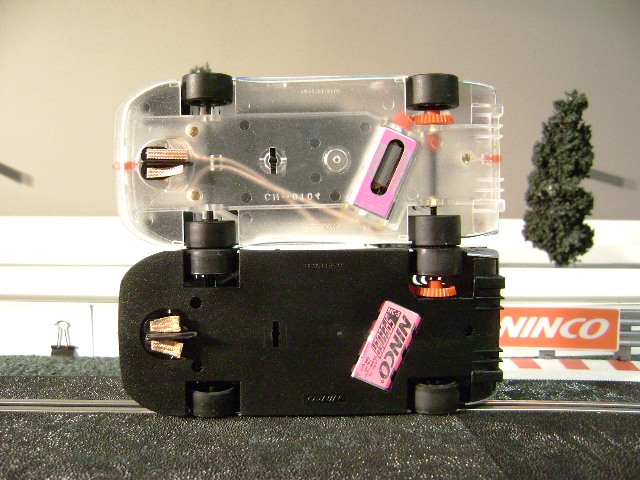 Now comes the good part... The body needed to be shown but its really the chassis that holds the majority of the upgrades on this car. Here you may spot several differences but the glaring one is that odd see through chassis for the first time in a NINCO RTR. 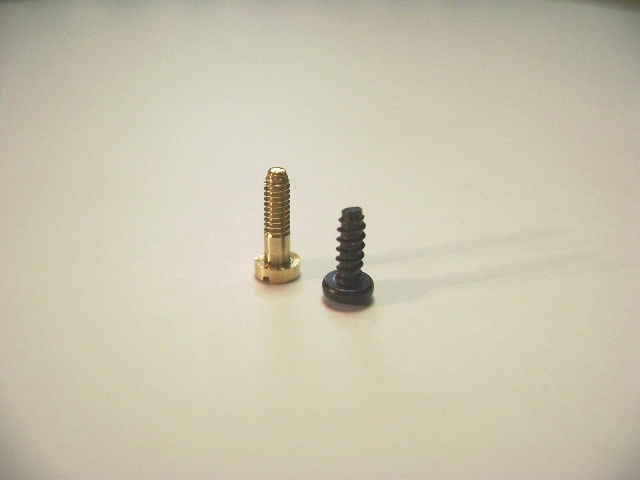 What's holding this chassis to the body is different from all RTR's but the Vortrom Lightning Pro-Race version. Metric screws are used on this release which allow for more refined adjustment of body movement and you can see the obvious differences between these and standard black screws. These metric screws are the same that come with the Pro-Driver/Pro-Race cars but there is another pro-race feature found in this new LeyJun version. 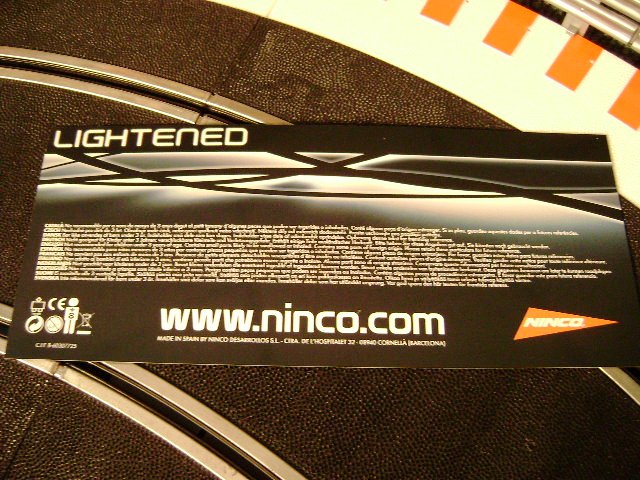 You've seen me mention the word 'lightened' several times and NINCO wants to make certain you know it's special so they include a case card to point that feature out. As I pointed out by the tinted cockpit glass comments earlier in the review I had a feeling a lighter interior was used but I was curious what other weight saving options were included... 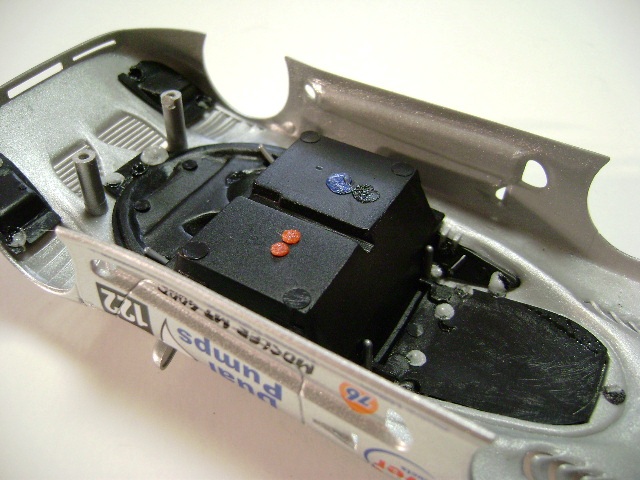 I was at least right on the interior. Here you see the standard hard plastic interior tray, more of less a half tray and a solid black section to block seeing through those back canopy louvers behind the driver. 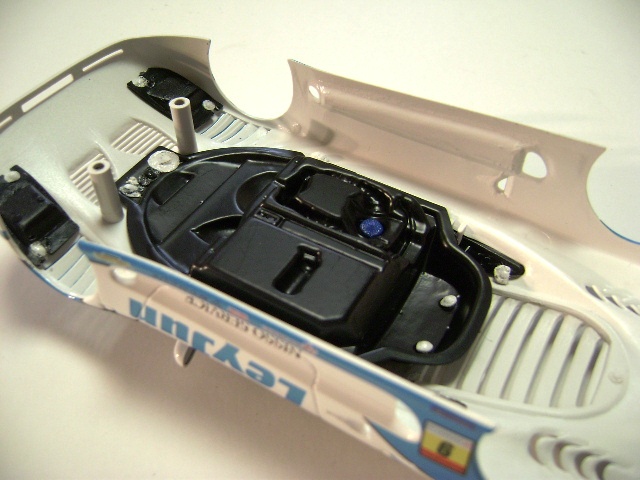 The new lighter interior on this car drops the details like the fire bottle and roll cage and our driver has been trimmed even more being taken down from a figure from the armpits up to just simply being a helmet attached to the thin black lexan interior tray. Also notice that the plastic section covering the louvers is totally removed in this model... probably a nice ventilation bonus for the motor. 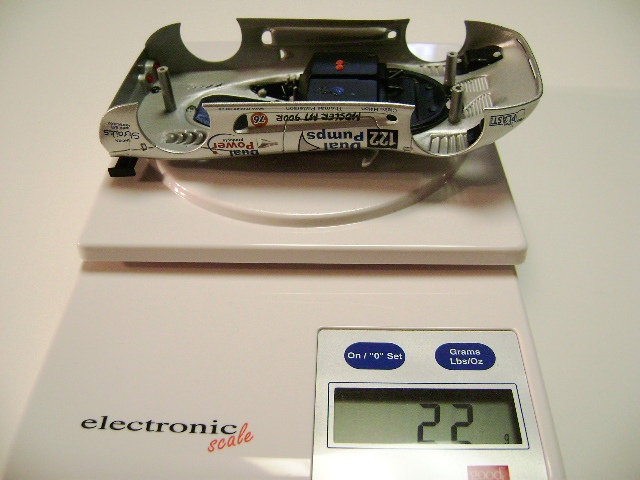 As far as a weight advantage? Well 2 grams is what my scale shows, understanding that my digital scale is no scientifically precise version, but knowing it is in fact lighter I already began to wonder what difference it would make on the track. 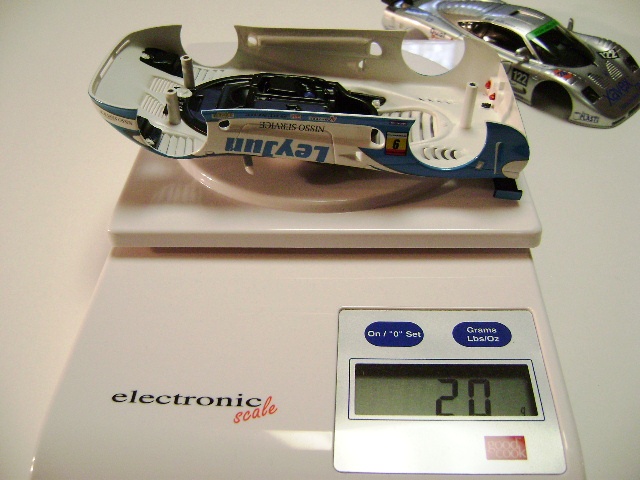 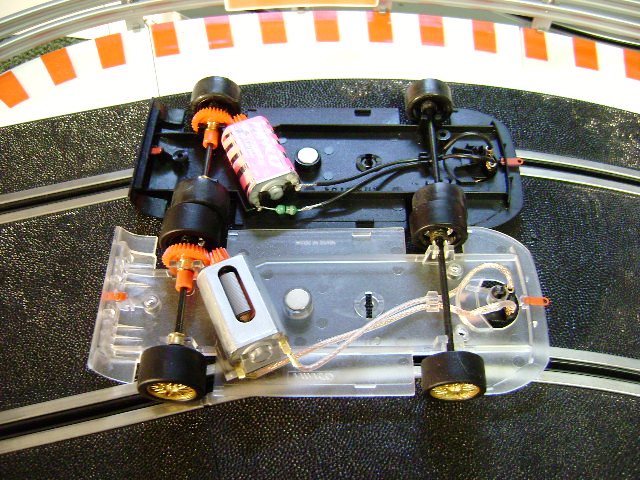 Getting back to chassis comparisons there are certainly features that look different however the chassis design looks to be unchanged. Aside from being clear I see no additional cross bracing, no alteration to the frame rails or axle mounts so 'it must be lighter' I said to myself... 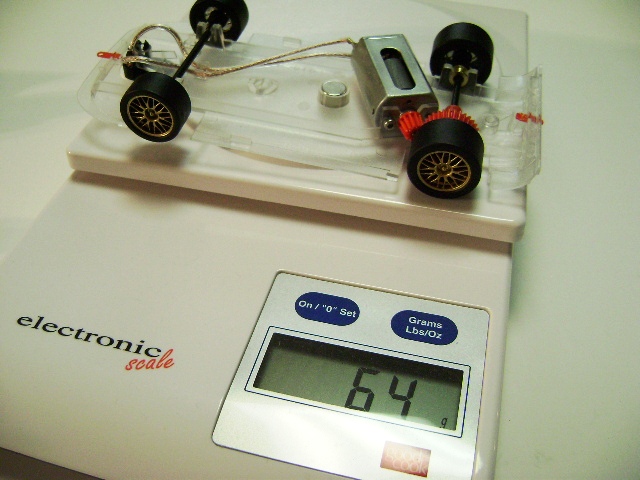 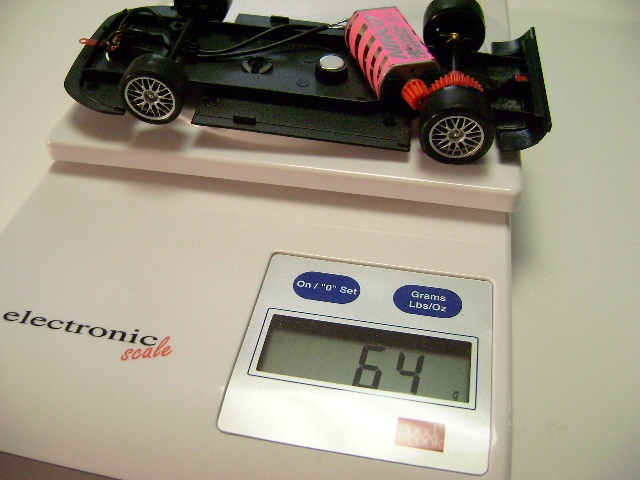 Wrong.. or if it is lighter its not significantly lighter for my scale to pick it up. So then what advantage is this new chassis if its not that much lighter? Is it stronger? With no effective way for me to test that I took both chassis' in my hands and gave them both a slight twist in the opposite directions. Twisting the front and back in alternate directions several times I couldn't really 'feel' a difference, both allowed what felt like the same amount of flex so it wasn't like one flexed like plyable plastic and the other felt more rigid. To my hands they feel about the same. That doesn't really indicate strength relative to breakage however. I know some have complained about the black chassied cars cracking bushing mounts, even I had that happen on my Pro-Driver kit Supra chassis, and maybe this new chassis will remedy that however only time will tell once the cars begins to see any serious racing. 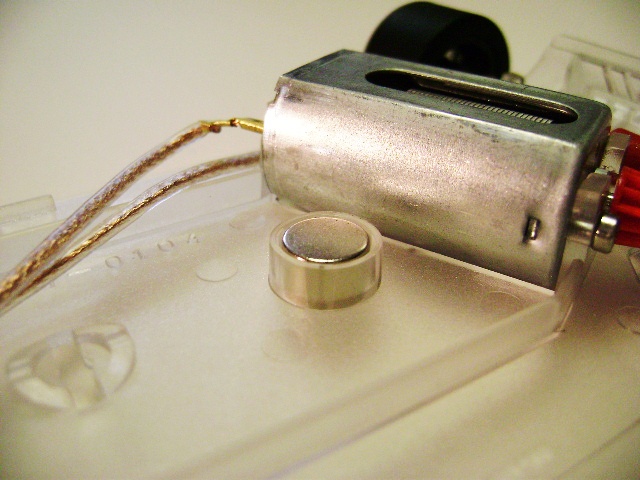 Stock out of the box downforce is provided by the same button-style magnet NINCO uses in all of their road and track cars although knowing the interior is 2 grams lighter there is likely a residual downforce effect, no matter how slight. 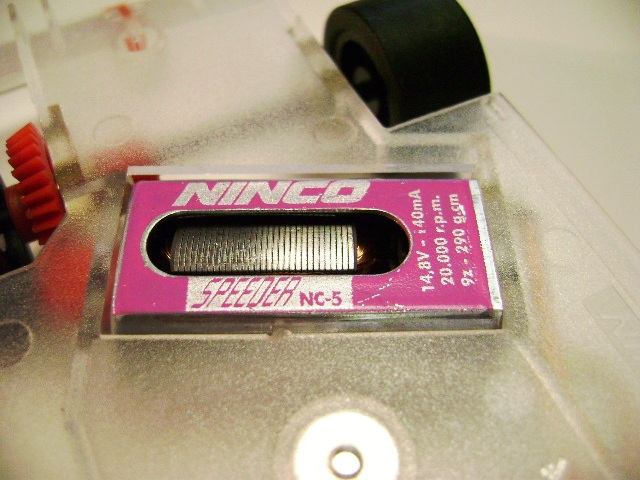 A slight change here in the motor side of things as the NC-5 in this version loses the foil like wrapping over the motor exposing large cooling holes. In place of the motor wrap NINCO tampo printed just the bottom side of the motor leaving the rest of the motor undecorated. 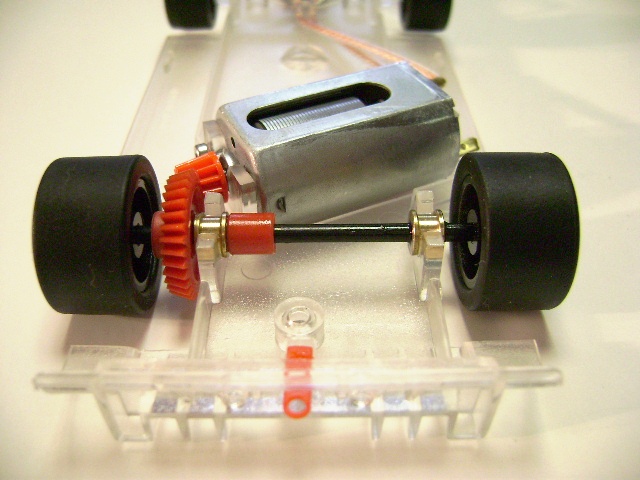 Gearing is standard NINCO angle-winder gearing both in gear ratio and gear material and the axle is held in the chassis with brass bushings like traditional Moslers before it rather than Vortrom editions ball bearing bushings. 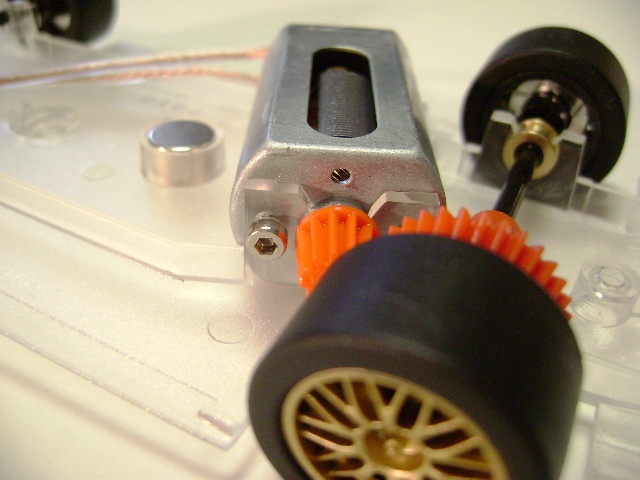 Something that fans have been asking about for a very long time, a new motor screw secures the NC-5's torque to the motor mount reducing questionable play of the motor in the carrier. I know many will appreciate this addition as many associate loose motors to the notorious 'NINCO-hop' that we read about in the forums from time to time. 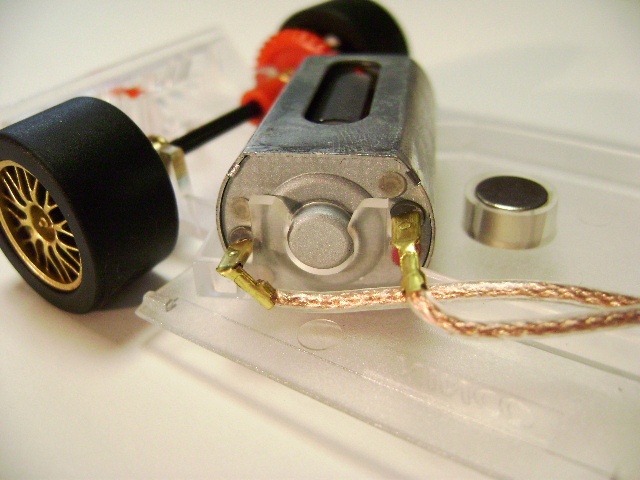 Yet another interesting change is press on motor connections! Very cool if you ask me as now you won't have to mess with the wires, eyelets and guide when wanting to swap out motors in this car... or will you? Curious thing for me is that all of NINCO's seprarately available motors have previsouly come packed with wires attached. Unless NINCO has plans to change that it means you'll first need to remove your replacement motor's wires and clean off any solder that might prohibit these new press on connectors from working. While interesting this change makes me feel that NINCO will now have to offer both wired and unwired versions of their motors as having to remove wiring from pre-wired motors to use these connections is a hassle but for many having to solder on wiring when swapping out motors on previous NINCO cars would be even more of a hassle. 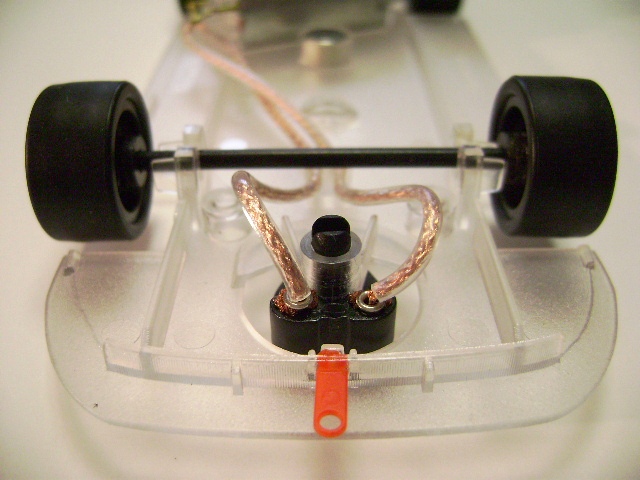 As you no doubt have noticed by now the wire is different in this car too. The new clear silicone cased wire is used here, yet another similarity of the Vortrom Lightening car. I have to admit some of these changes have me scratching my head. I'll elaborate more at the end. 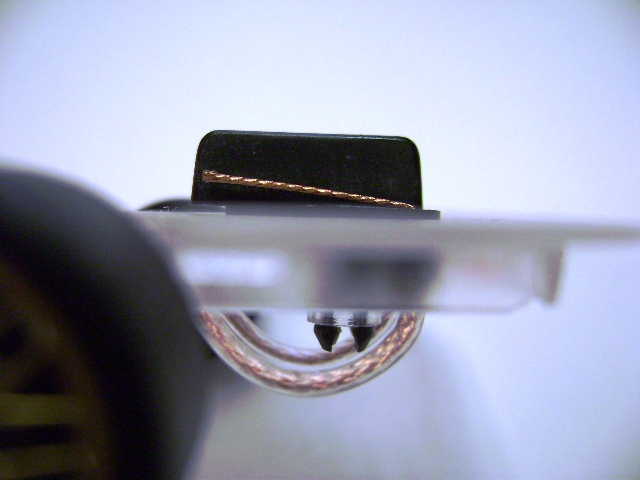 Pretty cool being able to see the guide 'through' the chassis... braids are standard NINCO and the guide doesn't appear to be any different itself. Nothing 'sprung' with the guide, wasn't in previous versions either, so up front the only difference is the wires. 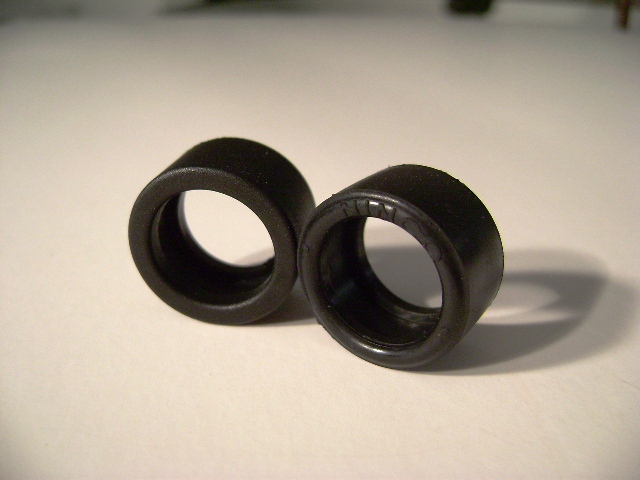 For me perhaps the most interesting change is here... the tires. Standard NINCO tire on the right, everyone familiar with NINCO knows them very well, yet on the left we have been given something entirely different both in looks, and dare I say performance. That's right, an entirely new tire design. A slightly smaller, more squared off tire with flattened side walls and no distinguishing markings. I have to say I didn't expect this... and with all of the other changes I was now REALLY eager to see what on track differences all these changes would make. Important to note that in 'testing' the three previous Moslers all ran within thousandths of a second of each other. Last 'recorded fastest' lap for a stock tested Mosler was 5.653 on my 60-foot test track. The new LeyJun, trying not to show off, somewhat vexed me when the lightened LeyJun registered its box-stock time of 5.681. I frowned and checked the times again but it was right so the next logical thing for me to do was make sure the rims were flashing free, which they were, then sand the rear tires down and run them over some tape before heading to the track again. A few laps in to the next run and I saw the timer flash a 5.351. 'Better' I thought but still not what I was expexting. The NINCO Ascari I reviewed in June of 2007 had run a box-stock with tires sanded time of 5.358 so the 'lightened' LeyJun was faster yet just by a hair at 60-feet. Determined I kept at it... more 5.4 and 5.5 second laps than I cared to count yet occasionally I saw flashes of brilliance as right around lap 90 of my test the timer registered a 5.190. 'NOW we're getting somewhere' I said to myself and I began to get excited thinking this Mosler might be the first RTR NINCO to break the 5-second mark on my track. I tried, I tried very hard, pushing it more and more to the point of crashing the car more than I like. 'Stop looking at the timer' I said to myself as it was obvious I was over driving the car on my track. Doing just that I settled in, trying to work on smooth consistency and sure enough, about 30 laps later the timing sheet showed the best lap, a 5.144. Still not under the 5-second barrier but now the fastest RTR NINCO of the ones I've tested. The Final Verdict: 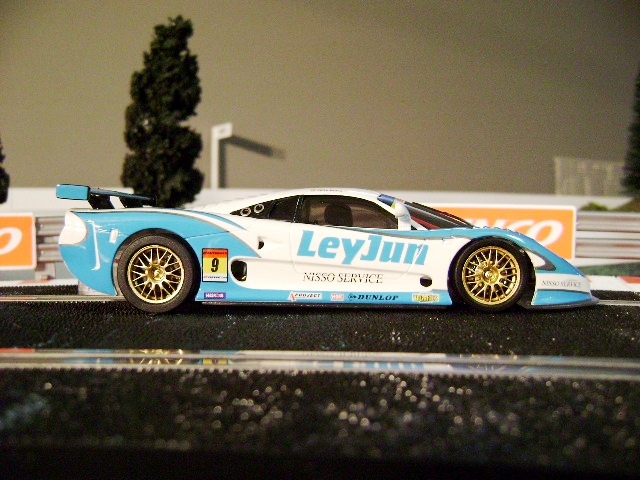 So the 'Lightened' LeyJun Mosler is now the fastest of my box-stock NINCO fleet. The question I have is it the two grams weight savings from the interior that helped it the most? Was it the cooler running upwrapped motor secured by a motor carrier screw that made it quicker or maybe it was the new rear tires working to give it different grip than the tires used on previous models? Not sure than I can tell you any one thing made it faster but it did end up being just that... faster. What makes me wonder though is how this car fits in with other NINCO cars. It has the ProRace parts like the silicone wires, light weight interior and metric screws of the Vortrom 'Lightning' yet without the Lightnings metal wheels, metal gears, race braids, ball bearing bushings and NC-6 motor. It has the standard guide, plastic wheels and plastic gearing of the standard cars but has a unique chassis, screw holding the motor in place and press on motor connections. It's neither 'standard' nor all out 'Pro-Race' so its a bit odd in a sense. Be that as it may it's still a great running NINCO model that has its advantages providing you race it in an environment that allows its unique properties. For now I'm calling this a 'hybrid' NINCO racer and I'll be curious to see what others think about it. Thanks to Model Rectifier (MRC) for providing the NINCO Mosler MT900R LeyJun 'Lightened' for review. Please stop by the HomeRacingWorld.com Message Board to talk about this and all other models of slot cars. Happy Slotting! Shawn Smith - SJSlots Shawn@HomeRacingWorld.com Thanks Go To MRC For Sponsoring This Review! |
